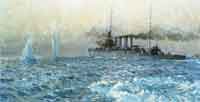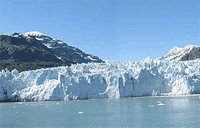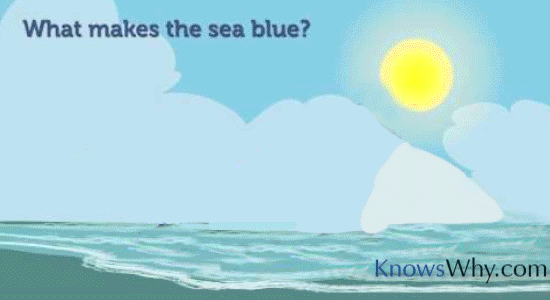The sky appears blue on a clear sunny day. In the evening, the sky slowly turns yellow, red and orange. This happens even in the early morning. But why does the sky appear blue? To know about that, first it is necessary to know some basics regarding the atmosphere and light.
Atmosphere: It is a mixture of gases and other materials. It is made of mostly gases like Nitrogen (78%) and Oxygen (21%); argon gas, water, solid particles, salt from the ocean, dust, soot, pollen, ashes, and many more other gases. The gases are densest near the Earth, and become thinner higher up.
Light: It is a kind of energy that radiates or travels. Many types of energy travel in waves. Light is a wave of vibrating electric and magnetic fields. A small part of a large range of vibrating electro-magnetic fields is called an electromagnetic spectrum. The energy of radiation depends on its wavelength and frequency.
Wavelength is the distance between the two tops or crests of the waves. Frequency is the number of waves that pass per second.
Colors in Light: White light is made up of different colors. The spectrum can give us a picture of seven colors. At one end is a red and orange blend. At the other end, blue and its shades are seen. These colors have different frequencies and wavelengths.
Particles and Light in Air: Particles larger than wavelengths of visible light reflect the light as it is. While those that have lower wavelengths than that of visible light absorb the light of particular wavelength, and release or radiate it later. High frequency colors are absorbed more often than lower color frequencies. This varies based on the size of the particle. This radiation or scattering is called Rayleigh scattering, or the Tyndall effect.
Blue Sky: As light moves through the atmosphere, most of the longer wavelength radiation, such as red and orange-like colors go straight, while gas molecules mostly absorb shorter wavelengths, such as light (blue). This absorbed light later gets scattered, or radiated all over. This reaches our eyes as the blue color.













December 5, 2010 1:51 am
ANother thing to note about light is that when light bounces or reflects off an object, those colors that are reflected off are all the colors that the object is NOT. So what we see is not the color of the object. A wall painted so that we see blue is actually all colors except blue. The would would look very strange to us if we saw things colored as they really are.